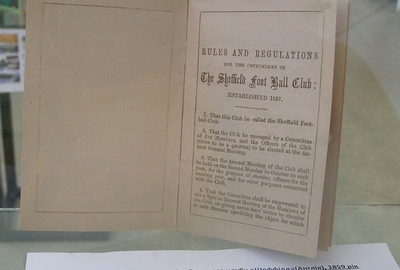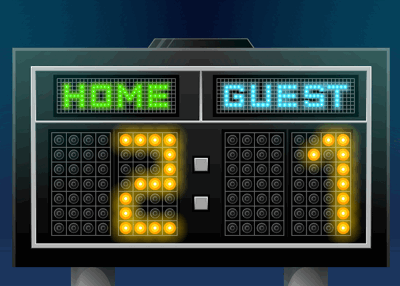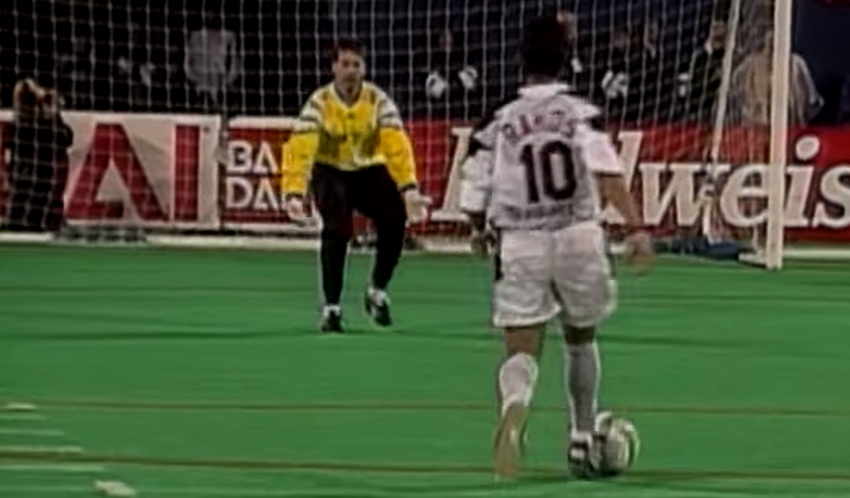 Despite the fact that the likes of American Football and baseball dominate the American market, association football remains one of the most-loved sports in the world. It is watched by billions, with the likes of the World Cup and Champions League attracting television audiences from every corner of the globe.
Despite the fact that the likes of American Football and baseball dominate the American market, association football remains one of the most-loved sports in the world. It is watched by billions, with the likes of the World Cup and Champions League attracting television audiences from every corner of the globe.
Yet still there remains the notion of attempting to improve upon the game in certain ways every now and again. Sometimes those ‘improvements’ are genuinely good, such as the introduction of goal line technology. Other times, however, the rules that are introduced simply don’t work and, as a consequence, don’t last long before they’re abandoned.
In this article we’ll be taking a look at a few rules that came into the game in one way or another but were quickly given up on. Some of them were specific to a country, others were limited to a league. Some of them were introduced in certain knock-out tournaments but didn’t impress enough for the authorities to stick with them long enough to see if they’d be widely adopted. That’s something that the critics of Video Assistant Referees might want to bear in mind if they’re hoping that it doesn’t stick around for long.
You might read this piece and think that some of the ideas were actually quite good and lament the fact that they didn’t get an opportunity to be proven as useful. Fear not – football tends to be cyclical. It’s entirely possible that they were good ideas that came about at the wrong time….
Two Points For A Home Win, Three For An Away Win
 Back in the 1980s, there was a sense that football games were becoming quite boring. The away side didn’t want to attack the team playing at home for fear of being beaten, so matches were often played out with the visiting team defending for ninety minutes and the hosts having to try to break them down.
Back in the 1980s, there was a sense that football games were becoming quite boring. The away side didn’t want to attack the team playing at home for fear of being beaten, so matches were often played out with the visiting team defending for ninety minutes and the hosts having to try to break them down.
Ahead of the 1981-1982 season the rules changed to give the winners of a match three points instead of two, with a draw still being worth one and a loss none. This improved things slightly in the Football League, but elsewhere in football things remained a bit less exciting than the authorities has hoped. As a result, the organiser of the top non-league division, the Alliance Premier League, decided to introduce a new rule whereby the away side would get three points for a win but the home team would only get two.
It sort of worked, too. Away teams began to attack more and picked up more wins as a result, but home teams countered that by simply defending more readily that they go on the offence. The problem hadn’t been solved, therefore, but merely switched around. It also resulted in teams winning less matches than others finishing higher in the table. In the 1984-1985 season, Wealdstone won just eight of twenty-home games compared to Nuneaton who didn’t lose at home. Wealdstone ended up as champions, however, and Nuneaton could only finish second. The experimented continued for another year, but by the time the 1986-1987 campaign sort underway the system had been abandoned and the league returned to awarding three points for a win regardless go which team achieved it.
The Silver Goal Rule?

When FIFA introduced the Golden Goal rule in 1993 many people thought it wouldn’t last.
The idea was that if a team scored a goal during extra-time then the match would immediately be over, with the scorers declared the victor. It was hoped that the rule would encourage more attacking play as teams would wish to avoid a penalty shoot-out, when in actual fact it had the opposite effect. Those that hoped it wouldn’t stick around for long were disappointed, with FIFA remaining resolutely convinced that their ‘sudden death’ format was a winner and kept it around until the start of the 2004-2005 season. One thing that was short-lived, though, was the tweak of the rule known as the Silver Goal that was introduced by UEFA.
Under the Silver Goal rule it was no longer sudden death, meaning that if a team scored in the first-period of extra-time the match would continue until the half was over. If one team was leading at the end of the first-half of extra-time then they would win the match. It wasn’t much loved by any team taking part in a competition, with UEFA deciding that a competition playing extra-time could choose whether to use the Silver or Golden Goal rule.
The International Football Association Board decided to abandon both methods of deciding a game after the end of European Championships in Portugal in the summer of 2004.
American Penalties

As we mentioned in the introduction, the Americans love the likes of Gridiron and baseball, to say nothing go basketball and ice hockey. One of the things that they love about them is that there’s an easy way to discover a winner, without the need for a match to end in a draw. When Association Football began to be introduced in America thanks to the North American Soccer League in the 1970s, it didn’t take long for the authorities to question why it wasn’t really catching on. The answer seemed obvious – the chance of the game ending in a draw.
By 1975 the decision was taken to introduce extra-time and penalties to every single game played in America, including standard league matches. Obviously that sometimes resulted in things being even more boring for them, given that games went on longer than before.
That’s why a new method of deciding the winner of a match was invented in time for the 1977 season. The attacking player would have the ball thirty-five yards from goal and would have five seconds to score. It was based around the idea of the NHL penalty shoot-out and a similar thing can be seen today in hockey matches. The new style of shoot-out came into play as soon as the ninety minutes of the normal match were over.
The problem was that it didn’t really work. Instead of demonstrating some amazing attacking, the players taking the penalties simply fell apart under the pressure of having to find a way past the goalkeeper in such a short period of time. When the North American Soccer League was abandoned in 1982 the weird shoot-out system with it could have died too, but when Major League Soccer came in in 1995 the shoot-out came back within it. Thankfully it didn’t catch on anywhere else and even the MLS abandoned it in 1999.
Kick-Ins

The final rule that didn’t last that we’ll tell you about is one that actually makes a slight degree of sense when you think about it.
The game that we all love is called football, with important syllable being the first one. Yet when the ball goes out of play along the touchline it is put back onto the field of play thanks to the use of both hands and no feet. That’s perhaps why Sepp Blatter declared at a FIFA gathering in 1994 that ‘in two years the kick-in will replace the throw-in in the laws of the game and then we will have an even faster game than we have now’. FIFA didn’t actually introduce any new rule to change, however, with that responsibility seemingly falling to the lower leagues in Belgium, Hungary and England.
To suggest that the new rule wasn’t welcomed by everyone would be something of an under-statement. Some managers simply refused to allow their players to take kick-ins, forcing them to take old-fashioned throw-ins instead. When kicks were taken by teams they simply smashed the ball down field, resulting in the equivalent of set-pieces from the sidelines. Sufficed to say it didn’t last very long before it was abandoned in its entirety, but the desire to see a change of rule hasn’t melted away completely.
Even as recently as 2009 the then Arsenal manager Arsene Wenger said, “The rule I would change would be maybe to play throw-ins by foot”. As we said before, football is cyclical…
